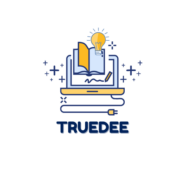As I dive into the world of adult learning, I’m constantly amazed by how different it is from traditional education. Adults come with unique experiences, motivations, and challenges that shape their learning journeys. Understanding these nuances is crucial for anyone looking to foster effective learning environments. In this article, I’ll explore some of the best practices that can enhance adult education. From leveraging real-life experiences to promoting collaboration, these strategies not only engage learners but also empower them to take control of their learning. Whether you’re an educator, a trainer, or an adult learner yourself, these insights will help you navigate the complexities of adult education with confidence.
- Adult Learning Principles: Recognizing that adults prefer self-direction, bring valuable experiences, and seek relevance in their learning helps create effective educational environments.
- Collaborative Learning: Fostering a supportive atmosphere encourages open communication, community building, and respect, enhancing engagement and retention among adult learners.
- Real-Life Application: Incorporating real-world scenarios and allowing learners to share personal experiences increases the practical relevance of the content and empowers adult learners.
- Interactive Techniques: Utilizing methods such as group discussions, role-playing, and problem-solving tasks promotes active participation and critical thinking skills in adult education.
- Technology Integration: Leveraging technology, such as Learning Management Systems and multimedia resources, offers flexible and diverse learning options tailored to adult learners’ preferences.
- Continuous Evaluation and Improvement: Regular assessment of learning outcomes and feedback mechanisms are crucial for identifying strengths and refining adult education programs for better effectiveness.
Understanding Adult Learning
Adult learning differs significantly from traditional educational methods. Recognizing its unique characteristics helps create more effective learning environments for adults.
Key Principles of Adult Learning
- Self-Direction: Adults prefer taking charge of their own learning experiences. They often arrive with specific goals and expectations, which require them to actively engage in the learning process.
- Experience as a Resource: Adults bring valuable life and work experiences to their learning. Incorporating real-world examples and practical applications enriches the learning environment.
- Relevance: Adults strive to understand how new knowledge applies to their personal and professional lives. Ensuring that learning materials connect with their interests increases engagement.
- Problem-Solving Orientation: Adults approach learning with a focus on solving practical problems. Designing learning activities around real challenges can enhance motivation and relevance.
- Respect: Adult learners value being treated as equals in the learning process. Facilitating environments that foster open communication and collaboration promotes a positive learning atmosphere.
- Andragogy: This theory, proposed by Malcolm Knowles, emphasizes the importance of self-directed learning for adults. It outlines key assumptions about how adults learn differently from children, focusing on their readiness to learn and intrinsic motivation.
- Transformative Learning: Jack Mezirow developed this theory, highlighting the role of critical reflection in adult learning. Adults often undergo transformative learning experiences that challenge their assumptions and help them reconstruct their perspectives.
- Experiential Learning: David Kolb’s model stresses the significance of experience in the learning process. It includes concrete experience, reflective observation, abstract conceptualization, and active experimentation, allowing adults to learn through direct interaction.
- Social Learning Theory: Albert Bandura’s theory focuses on learning through observation and imitation. Adults learn effectively in collaborative environments, where they can share experiences and insights with peers.
- Connectivism: A modern theory that emphasizes the role of networks in learning, it asserts that adults learn best in environments where they can connect with others and access diverse information sources.
Adult Learning Best Practices

I focus on implementing effective strategies that cater to the unique needs of adult learners. This section outlines key practices that enhance the learning experience.
Creating a Supportive Learning Environment
Creating a supportive learning environment promotes engagement and retention among adult learners. It involves fostering respect, trust, and encouragement. Facilitators should:
- Encourage Open Communication: Allow learners to express themselves freely and share their thoughts.
- Build a Sense of Community: Facilitate group activities that promote collaboration and relationship-building.
- Provide Accessible Resources: Ensure that materials and support services are readily available to all learners.
- Acknowledge Diverse Backgrounds: Recognize and respect the varied experiences and perspectives that adult learners bring.
A supportive atmosphere motivates adults to participate actively and enhances their learning journey.
Incorporating Real-Life Experiences
Incorporating real-life experiences into the learning process increases relevance and practical application. Adult learners benefit from:
- Relating Content to Real-World Scenarios: Use case studies and examples that reflect situations learners encounter.
- Encouraging Sharing of Personal Experiences: Allow learners to discuss their backgrounds, fostering peer learning.
- Utilizing Problem-Based Learning: Present real-world challenges and let learners collaborate on finding solutions.
- Linking Theory to Practice: Integrate theoretical concepts with practical applications to emphasize usefulness.
This approach reinforces the relevance of the content and enables learners to apply new skills confidently in their lives.
Techniques for Effective Adult Learning

I focus on leveraging various techniques that enhance adult learning, ensuring engagement and retention. Two effective methods are interactive learning methods and the use of technology in learning.
Interactive Learning Methods
I prioritize interactive learning methods that promote participation and collaboration among adult learners. Techniques such as role-playing, group discussions, and case studies encourage active engagement. Activities like peer teaching stimulate knowledge sharing, allowing learners to connect with diverse perspectives. Problem-solving tasks challenge adults to apply their skills and experiences, fostering critical thinking. Utilizing simulations helps learners practice real-world scenarios in a safe environment, bridging theory and practical application.
Use of Technology in Learning
I incorporate technology to enhance the adult learning experience. Learning Management Systems (LMS) streamline access to resources and track progress. Online forums and discussion boards facilitate communication among learners, promoting an ongoing dialogue. Multimedia presentations utilize videos, podcasts, and interactive content, catering to different learning styles. Virtual reality (VR) and augmented reality (AR) create immersive environments that enhance understanding and retention. Mobile applications provide flexible learning opportunities, allowing adults to learn at their own pace and convenience.
Evaluation of Adult Learning Programs

Evaluating adult learning programs involves assessing the effectiveness of the educational processes and outcomes. This helps identify strengths and weaknesses, informing future enhancements.
Assessing Learning Outcomes
Assessing learning outcomes occurs through various methods. I use pre- and post-assessments to measure knowledge gains. Surveys and feedback forms gather learner insights, revealing levels of satisfaction and engagement. Observational methods capture participation in discussions and activities. It’s essential to align assessments with learning objectives to ensure clarity in measurement. By analyzing this data, I can determine the effectiveness of instructional strategies and make informed decisions regarding adjustments.
Continuous Improvement Strategies
Continuous improvement strategies are vital for enhancing adult learning programs. I regularly review assessment data to identify trends and gaps. Setting specific, actionable goals based on feedback allows me to target areas needing attention. Implementing pilot programs or new strategies provides opportunities for experimentation, enabling me to assess their impact before full-scale adoption. Additionally, fostering a culture of openness encourages learners to share experiences, which informs ongoing revisions and optimizations. Emphasizing collaborative evaluations promotes shared ownership of the learning experience, leading to more refined and effective program designs.
Embracing the unique characteristics of adult learners can transform educational experiences. By prioritizing real-life applications and fostering a collaborative environment, I can create a space where learners feel valued and engaged. It’s essential to incorporate interactive methods and the latest technology to meet diverse learning styles.
Regular evaluation of programs not only enhances effectiveness but also ensures that I’m meeting the evolving needs of my learners. As I continue to implement these best practices, I’m confident that I’ll empower adults to take charge of their learning journeys, making education a meaningful and impactful experience.

